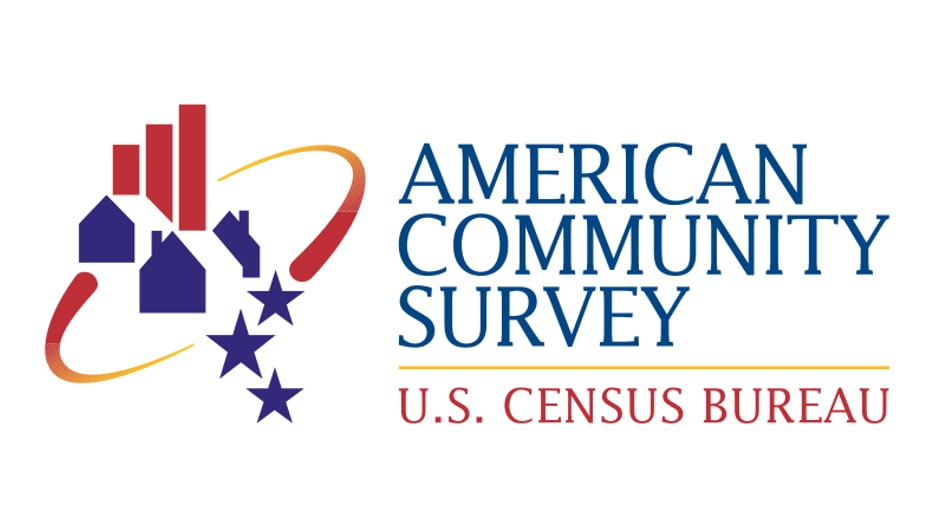Key points
- The American Community Survey (ACS) is a national self-report survey.
- Sample: households that are representative of the U.S. population at national, state, county, and zip code tabulation area (ZCTA) levels.
- Sample size: 3 million people per year.
- VEHSS topic: Vision Problems and Blindness.

Where the data come from
ACS is conducted by the U.S. Census Bureau. It is an annual, nationally representative household survey that collects and produces information on demographic, social, economic, and housing characteristics of the U.S. population. ACS serves the nation by providing a consistent and cohesive collection of characteristics that are comparable across all U.S. geographic areas.
The Census Bureau mails invitations to households, asking them to respond to the survey via the Internet. If no response is received from the household, the Census Bureau sends invitations to participate via mail, telephone, or personal visit, in that order, based on participant response or nonresponse to each previous option. For residents of group quarters facilities, the Census Bureau collects ACS data exclusively via personal interview.
The Census Bureau releases summarized counts and prevalence rates from 1 or 5 years of ACS data through census.gov. The Census Bureau also releases Public Use Microdata Sample (PUMS) files, which can be used to create custom analyses that are not available through summary ACS data products such as the American Fact Finder.
The only vision-related question included in ACS is the Department of Health and Human Services standard disability question on vision: “Are you blind, or do you have serious difficulty seeing, even when wearing glasses?”
Analysis overview
VEHSS estimated the prevalence rate and sample size for the VEHSS categories listed below from single years of ACS PUMS data at national and state levels. The prevalence rate was defined as the number of people who gave an affirmative response to the question divided by the total number of respondents who gave an affirmative or negative response and multiplied by 100 for presentation as a percentage. Estimates with high uncertainty are suppressed (see VEHSS ACS Data Summary Report linked above).
Since counties and smaller geographic areas are not included in PUMS, VEHSS reports county summary estimates from 5-year merged ACS data as reported directly by the Census Bureau without suppression. Stratifications for county estimates are limited to age group and sex.
ZCTA estimates are also based on values reported from 5-year merged ACS data as reported directly by the Census Bureau. However, because many ZCTAs contain very small populations, we assessed reliability of ZCTA prevalence estimates by calculating their interunit reliability (IUR) and classifying IUR as good (>0.75), moderate (0.5–0.75), or poor (<0.5). Poor-reliability ZCTAs were merged with their next largest neighboring ZCTA to form clusters until all included ZCTAs or ZCTA clusters achieved at least moderate reliability. ZCTA estimates do not include any stratifications.
- VEHSS Topic - Category – Vision Problems and Blindness – Vision Loss and Blindness
- VEHSS Indicator – Percentage of people who are blind or have serious difficulty seeing even when wearing glasses
- ACS Variable Name – DIFFEYE
- ACS Question Text – Is this person blind or does he/she have serious difficulty seeing even when wearing glasses?
- Sample – All ages
- National, state, county, and ZCTA
Data definitions
Risk Factors
Age group
A detailed description of the analytical steps is described in the report "VEHSS Survey Analysis Plan."
Full analysis documentation is included in the "VEHSS ACS Data Report."
ACS is a household response survey that contains only one question on visual function. In validation research conducted by VEHSS, the self-report question included in ACS showed marginal diagnostic accuracy for predicting best corrected visual acuity loss and blindness in a sample of ophthalmology and optometry patients. However, this analysis did show that variation in the self-report question was highly correlated with variation in acuity among nearly all demographic groups. The prevalence of this measure cannot be directly translated into the prevalence of defined visual impairment or blindness. Surveys do, however, provide important information on variation and drivers of disparities in health outcomes that are not available in other data sources.
ACS is not intended to be a health survey. ACS does not include health risk factors such as smoking, hypertension, or diabetes. In addition, ACS yields much lower estimates of vision loss than the Behavioral Risk Factor Surveillance System or the National Health Interview Survey, even while using the same or similarly worded questions. It is possible that people responding to a health survey may be primed to be more likely to answer in the affirmative to health questions.
Finally, ACS PUMS is a subset of the full ACS. ACS PUMS includes geography at state and Public Use Microdata Areas (PUMA) levels. In order to include county and ZCTA results, VEHSS reports summary estimates released by the Census Bureau from merged 5-year ACS samples and does not include group quarters, such as nursing homes. Therefore, county and ZCTA results in ACS are from different samples than state and national estimates and do not reconcile.
